Dissolving Fear Through Acceptance
An excerpt from Feng Shui Mommy by Bailey Gaddis
Before she was a beloved pregnancy blogger, certified birthing doula, and childbirth preparation educator, author Bailey Gaddis met her own pregnancy by buying a bunch of books — which, for the most part, made her even more confused, insecure, and scared.
Her new book Feng Shui Mommy: Creating Balance and Harmony for Blissful Pregnancy, Childbirth, and Motherhood (New World Library, May 14, 2017) is her way of giving pregnant women and new moms a better option. Adopting the principles and philosophy of feng shui, the Chinese system of a connected inner and outer harmony, this book guides women to their balanced center and supports them in tapping into the primal energies brought forth in the birthing experience. We hope you’ll enjoy this excerpt from the book.
# # #
A reverence is owed to fear — it holds the power to veer us away from danger and it provides us opportunities to discover and claim our courage, allowing us to grow in ways impossible to access without a powerful impetus. So thanks, fear — we honor you. Now we’re going to learn how to get you the heck out of our way.
Fear can be a catalyst for growth only when it is acknowledged and accepted, then shown the door. When it becomes a festering guest it begins swallowing up your reserves of health, happiness, and sanity, sticking you in a “what-if” paralysis. The oftentimes-false illusions that give birth to fear (e.g., a misconception that your body doesn’t know how to build and birth a baby) are frequently left unchecked in the vulnerable heart, mind, and body of the pregnant mama. You may believe the fears are there to protect you, maybe to “prepare you for the worst.” But instead of helping you prepare for an unlikely and unwanted outcome, the stress produced by these fears often creates the unwanted outcomes, like pregnancy complications, medical interventions, or postpartum depression.
The unknown sound you hear at night is much scarier than opening the door, peering outside, and seeing that the sound is just your cat chasing its tail. You’re going to open the door and get to know fear. You’re going to observe it, chat with it, and befriend it so it’s no longer the hidden demon you run from, but a known entity you know how to communicate with, know how to kindly ask to leave when it has served its purpose. The first step is exploring the basic (illusory) anatomy of fear, and how it affects your very real physical anatomy.
The Mind-Body Effects of Fear
The skeleton of fear is composed of thoughts about a perceived (not usually real) threat. The flesh of fear is composed of the unpleasant emotions triggered by those thoughts.
As soon as a fear is birthed in your mind, the amygdala (a nut-shaped organ in the core of your brain) sends a wake-up signal to your autonomic nervous system, causing your body to acknowledge the fear. The two lanes of the autonomic nervous system, the sympathetic and parasympathetic nervous systems, are the boss ladies regulating your internal organs, telling them what to do in times of danger and peace. But sometimes, they get a little confused.
Without the sympathetic nervous system (the Panic Room), you might pet a great white shark. Without the parasympathetic nervous system (the Meditation Room), you might have a panic attack when the waiter brings you a salad instead of a hamburger. The confounding thing is, the chemical response created in the body when facing either the shark or the salad is the same, even though one has the potential to cause death, while the other is just inconvenient. Death and inconvenience both sound unpleasant, but they’re way different. Unfortunately, the body does not know that they’re not rated the same on the scale of seriousness.
Sympathetic Nervous System: The Panic Room
When you’re shoved into the Panic Room, you fight, take flight, or freeze. Because it is unlikely you will be in many situations where physically fighting is an appropriate (or legal) response, the modern-day “fight” mechanism is to experience anxiety. A few other fun features of your Panic Room are a triggering of stress, an increase in blood pressure and heart rate, a slowing of digestion, a rerouting of blood to defense organs (the uterus is not a defense organ), and a decrease in your ability to think and reason. Fun, right? But remember, your body is not very good at deciphering an actual threat (a rattlesnake staring at you) from a perceived threat (the grocery store not having the right brand of almond milk); both situations can throw you into your Panic Room.
When you’re moving through childbirth, a process that is natural and rarely life threatening, the mind often sends the body into the Panic Room because it doesn’t know what to do with birth. “This is an unknown, this is scary — I don’t know what to do with this. Yup, we’re probably going to die.” None of these thoughts are based in reality, yet they evoke a very real response in the body, making birth more challenging, and ironically, more dangerous. The quickest way to achieve a room reassignment, from the Panic Room to Meditation Room, is deep breathing, which we’ll explore further in chapter 17.
Parasympathetic Nervous System: The Meditation Room
You should be living in your Meditation Room for about 98 percent of your life. You deserve to be living in your Meditation Room for 98 percent of your life. This is your restful space, where you get to feel all warm, fuzzy, and Zen-like. When you’re living in this space you calmly respond to non–life threatening stressors, your body is at ease, all your organs (including the uterus!) are receiving the ideal amount of blood and oxygen, your breathing is slow and steady, and you feel really good. With the release and absence of fear comes entry into your Meditation Room. Delivering your baby in this Meditation Room encourages gentle, comfortable, and healthy (maybe even blissful!) birthing.
An important component of preventing your fears from pulling you out of your Meditation Room is letting them speak their piece so they can leave you be.
Give a Voice to Your Fears
Tense situations are commonly diffused after both parties freely express their opinions. Conflicts with fears are no different — your fears need a nonjudgmental space in which to express themselves before they feel compelled to move on. That space is created when you stop trying to “fix” or overcome a fear, and just sit with it in a private location. Breathe into the emotions and sensations that emerge as you allow the fear to be there. Notice them and name them. For example, “I’m breathing into the tightness I feel in my chest when I think about my fear of pushing my baby out. I’m not trying to make it go away — it’s there — I’m just acknowledging it.”
Resist the temptation to validate, discredit, or conquer the fear — just be present with it. As if you’re watching a movie, observe the thoughts and images that come up as the fear moves through you; none of it is wrong. Any resistance, tightness, sadness, shaking, shame, pressure, anger, or any other form of emotional or physical expression is perfect, because that’s what’s coming up. It all has to come up to be released, and this can all happen in ninety seconds.
Ninety-Second Release
It takes ninety seconds or less for an emotion to be generated, chemically flow through the body, and be set free. If you say, “No! I do not want to feel sad right now. I’m going to force myself to feel something else,” and resist the ninety-second surge of sadness, you’ll need to process it again and again until you surrender to it. You can handle anything for ninety seconds; set your timer and breathe through it. Did you know surges during active labor often last about ninety seconds, commonly peaking at around thirty seconds, then diminishing?
# # #
Bailey Gaddis is the author of Feng Shui Mommy. As a Childbirth Preparation Educator, Birth Doula, and Hypnotherapist who works with pregnant women and their gorgeous offspring everyday, Bailey is fairly certain that “new baby smell” is the most enticing aroma on Earth. Visit her online at http://www.baileygaddis.com.
Excerpted from the book Feng Shui Mommy: Creating Balance and Harmony for Blissful Pregnancy, Childbirth, and Motherhood. Copyright ©2017 by Bailey Gaddis. Printed with permission from New World Library — www.newworldlibrary.com.











 Yes—and it’s huge
Yes—and it’s huge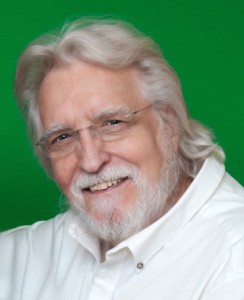
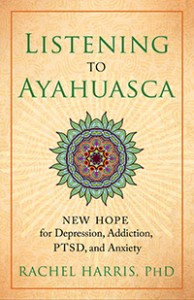 Guest post by Rachel Harris, PhD, author of LISTENING TO AYAHUASCA
Guest post by Rachel Harris, PhD, author of LISTENING TO AYAHUASCA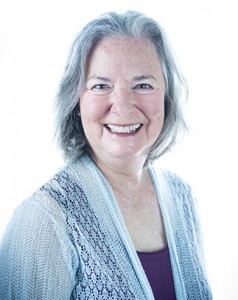 Rachel Harris, PhD, is the author of Listening to Ayahuasca: New Hope for Depression, Addiction, PTSD, and Anxiety. She received a National Institutes of Health New Investigator’s Award, has published more than forty scientific studies in peer-reviewed journals, and has worked as a psychological consultant to Fortune 500 companies and the United Nations. She lives on an island off the coast of Maine and in the San Francisco Bay Area. Visit her online at
Rachel Harris, PhD, is the author of Listening to Ayahuasca: New Hope for Depression, Addiction, PTSD, and Anxiety. She received a National Institutes of Health New Investigator’s Award, has published more than forty scientific studies in peer-reviewed journals, and has worked as a psychological consultant to Fortune 500 companies and the United Nations. She lives on an island off the coast of Maine and in the San Francisco Bay Area. Visit her online at 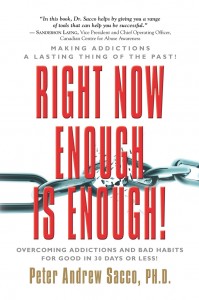 Have you ever heard of the Madonna complex? It has nothing to do with Madonna the entertainer. It is not some catchy “pop” psychology concept which sprung up overnight. Its legacy can be traced back to Sigmund Freud, the great Psychoanalyst and his psychosexual theories. Freud was a major believer in the notion that all human behaviour –wishes, dreams and gratifications, had a strong psychosexual basis.
Have you ever heard of the Madonna complex? It has nothing to do with Madonna the entertainer. It is not some catchy “pop” psychology concept which sprung up overnight. Its legacy can be traced back to Sigmund Freud, the great Psychoanalyst and his psychosexual theories. Freud was a major believer in the notion that all human behaviour –wishes, dreams and gratifications, had a strong psychosexual basis.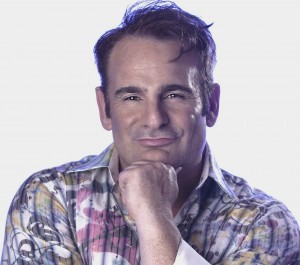 Dr. Peter Andrew Sacco is the author of many books including his new popular selling books; Right Now Enough Is Enough: Overcoming Addictions & Bad Habits and The Madonna Complex, and more than 800 magazine articles. Sacco is an award-winning lecturer at universities in both the USA and Canada, specializing in relationships, criminal psychology, addictions, and mental health. He is also a frequent resident expert on several television programs and appears regularly as a guest expert on many news talk radio shows in the USA (FOX, ABC, CBS, Iheart, Coast To Coast, Global News, Reader’s Digest etc.), as well as hosting the weekly radio show “Matters of the Mind: Managing Relationships and Mental Health.” He is also an award-winning executive producer and host of documentaries on relationships, psychological issues and child issues. You can learn more about him, or download free books at
Dr. Peter Andrew Sacco is the author of many books including his new popular selling books; Right Now Enough Is Enough: Overcoming Addictions & Bad Habits and The Madonna Complex, and more than 800 magazine articles. Sacco is an award-winning lecturer at universities in both the USA and Canada, specializing in relationships, criminal psychology, addictions, and mental health. He is also a frequent resident expert on several television programs and appears regularly as a guest expert on many news talk radio shows in the USA (FOX, ABC, CBS, Iheart, Coast To Coast, Global News, Reader’s Digest etc.), as well as hosting the weekly radio show “Matters of the Mind: Managing Relationships and Mental Health.” He is also an award-winning executive producer and host of documentaries on relationships, psychological issues and child issues. You can learn more about him, or download free books at  The other day someone asked me what my favorite gift was this holiday season. I didn’t hesitate to say, “The gift of good health for both my husband and me!”
The other day someone asked me what my favorite gift was this holiday season. I didn’t hesitate to say, “The gift of good health for both my husband and me!”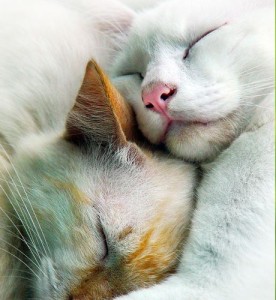
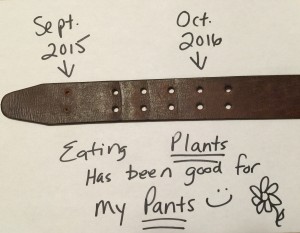
 By Jacqueline A. Eubany, MD, FACC FHRS
By Jacqueline A. Eubany, MD, FACC FHRS